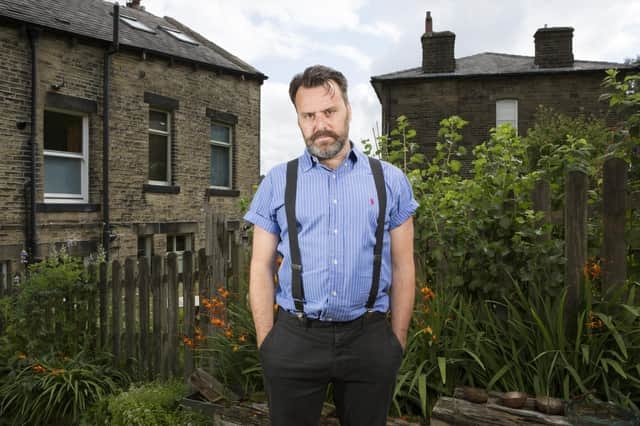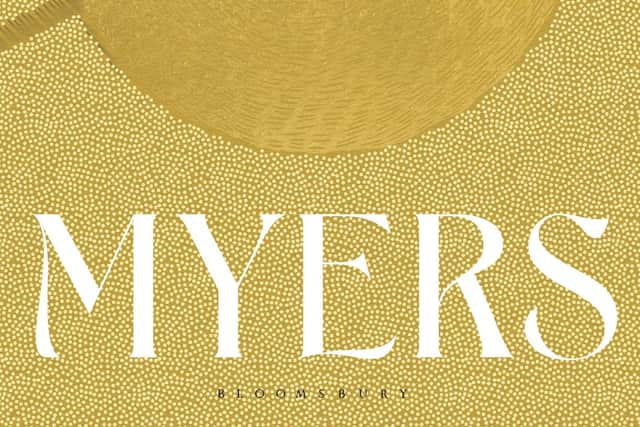Book review: The Perfect Golden Circle, by Benjamin Myers


The more esoteric avenues of the art world have always held a fascination for me. Land Art can be, even in reproduction, astonishing. Robert Smithson’s Spiral Jetty now seems like a kind of ecological doomsday clock; Walter de Maria’s Lightening Field is a strange message to persons unknown; James Turrell’s ongoing Roden Crater is the closest thing to a cathedral in modern art. At the same time, I have been shocked, saddened and enlightened by what Jean Dubuffet termed art brut. These are works produced by people who are not artists, such as Adolf Wölfli’s 1,600 pages of illustrations produced in an asylum, or the paintings of Richard Dadd or Henry Darger, and they have a cleaving effect: they stay with you and they splinter your perceptions. There are versions closer to home, such as Andy Goldsworthy’s interventions into and manipulations of the natural and, for example, the “Cement Menagerie” of John Fairnington Snr at Branxton. Both these genres of works are both ostentatious and private, spectacular and cryptic, disconcerting and almost mythic. So I was primed, under-varnished, as it were, for a novel about crop circles.
There are many adjectives I could use for Benjamin Myers’ novel. It is fascinating, clever, angry, poignant, beautifully constructed but the one I shall plump for is: it is lovely. I do not use that word lightly. It is a work of love, and a work about works of love, and a work that evokes a sense of love in the reader. It is not charming or whimsical or quirky, like all those novels called things like The Pontefract Marionette Society or Fairfax MacIvor’s Walk To the Moon. It is, as well as lovely, a deeply serious book.
Advertisement
Hide AdThe real life basis of the narrative is the antics of “pranksters” Doug Bower and Dave Chorley, who, in the late 70s and 80s, created crop circles using the simplest of tools. Such circles had been found before, but they took it to a new level. Soon enough, every nutjob was out of the woodwork. It was alien communication, angelic warning, or supernatural interference. The tabloids were delighted. I, for one, was delighted that it was two blokes with a plank and a length of rope.


In this fictional version, the culprits are a pair of diametric opposites. Calvert is an SAS veteran who has seen action across the globe, and significantly has had numerous parachute jumps – so he sees the world from above. He also lives in the “second smallest house” in England, and keeps meaning to take the measurements of the smallest house. Alongside him is Redbone, a rather frazzled hippy with a nebulous sense of there being something else and who did not notice a bird’s nest in his camper van. To say they are Yin and Yang would be an understatement, but they have a strange connection; one revealed early on via a wonky bench. The bench has a plaque to “Uriah Greenman, 1890-1979”. The two are iterations of a Green Man, and avatars of a lost Englishness. Calvert is buttoned up, and Redbone is Puckish. Together, they will “fuel the myth and strive for beauty”. Redbone is mystic, Calvert is practical. Together, where “no signs of modern civilisation are to be seen”, they find “new mythologies waiting to be spun”. The novel is divided across one scorched summer in 1989, with each chapter devoted to a particular design. As a novel this requires conflicts, and their aesthetic quest is interrupted by fly tippers, hare coursers, a person suffering from memory problems, and drunken aristocrats. But they persevere.
One of the novel’s joys is its resistance to explanation. How, and why, did they embark on this activity? We never learn. There is no psychologising about Calvert being at Goose Green and scarred, or Redbone having been at Stonehenge when the police used force against the people having their innocent and not so innocent celebrations. They just are, they are, in a sense, allowed to be. They may be pernickety, unreliable, punctilious and out-of-it, but they mean something to each other and to their mission or vision.
It would not work without some anchor, and the anchor here is land. Calvert, in a rare speech, says “regions or areas cannot be named, but specific parts within may not be. You can’t name every inch of the land… there is no birth certificates for such things. Some names just exist on the tongues of those who frequent them”. Then comes the upper-cut: “And this is just a nameless field not particularly close to anywhere significant”.
The Perfect Golden Circle does have its own very neat closure. As this mismatched pair strive ever for perfection, and chuckle over their ginger beer and cider about all the theories, there was always going to have to be an ending. The ending is perfect. To return to the visual arts and to the ways we look at nature, it is both apocalyptic and the summation of auto-destructive art as imagined by Gustav Metzger. This too will pass. In lines I will memorise Calvert says “I’m glad you’re optimistic”, and Redbone replies, “I have to be. Otherwise.” This draws the tart response, “Otherwise what?”
Benjamin Myers, The Perfect Golden Circle, Bloomsbury, £16.99.